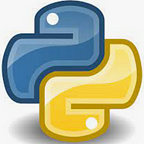Python Dictionaries: A Comprehensive Guide with Code Examples
Python dictionaries are powerful data structures that allow you to store and retrieve data in a key-value format. They provide a flexible and efficient way to handle data collections, making them a fundamental component of Python programming.
In this article, we will dive into the world of Python dictionaries, exploring their features, operations, and practical use cases, accompanied by code examples.
1. Understanding Dictionaries
Python dictionaries are unordered collections of key-value pairs, where each key is unique. They are enclosed in curly braces ({}) and consist of comma-separated key-value pairs. Dictionaries are mutable, meaning you can modify them after creation.
2. Creating Dictionaries
You can create dictionaries in multiple ways. One common method is by using curly braces and specifying key-value pairs. For example:
# Creating a dictionary
student = {'name': 'John', 'age': 20, 'major': 'Computer Science'}student = {'name': 'John', 'age': 20, 'major': 'Computer Science'}3. Accessing Values
You can access dictionary values by using their corresponding keys. For example:
